Kevin De Bruyne, the maestro of midfield brilliance, has garnered widespread acclaim for his exceptional skill set and tactical acumen on the football pitch. Renowned for his pinpoint passing, lethal strikes, and visionary playmaking abilities, De Bruyne has etched his name among the elite in the world of football. In this individual analysis, we delve into the multifaceted game of Kevin De Bruyne, examining his pivotal role on the field and his dynamic partnership with the prolific striker Erling Haaland. From dissecting his creative flair to unraveling his strategic contributions, join us as we explore the essence of De Bruyne’s impact on the game.
Assists
Kevin De Bruyne is most known for his incredible passing ability. He is one of the best assisters of his generation and has won the Premier League assist-league four years. Here, we will dissect his assisting prowess, showing his most frequent goal-leading passes.
Crossing
De Bruyne often gets himself into crossing situations during the game. He has an incredible eye for finding his teammates from these positions, using different techniques depending on where the opponents and teammates are.
Cut-Back
De Bruyne always has the vision to find the free player in the box. The cut-back has become a vital tool for this. When the center-backs cover the cross across the goal, the Man City players will realize that the space for the cut-back is open. This allows De Bruyne to play the cut-back, giving his teammate a good goalscoring opportunity.
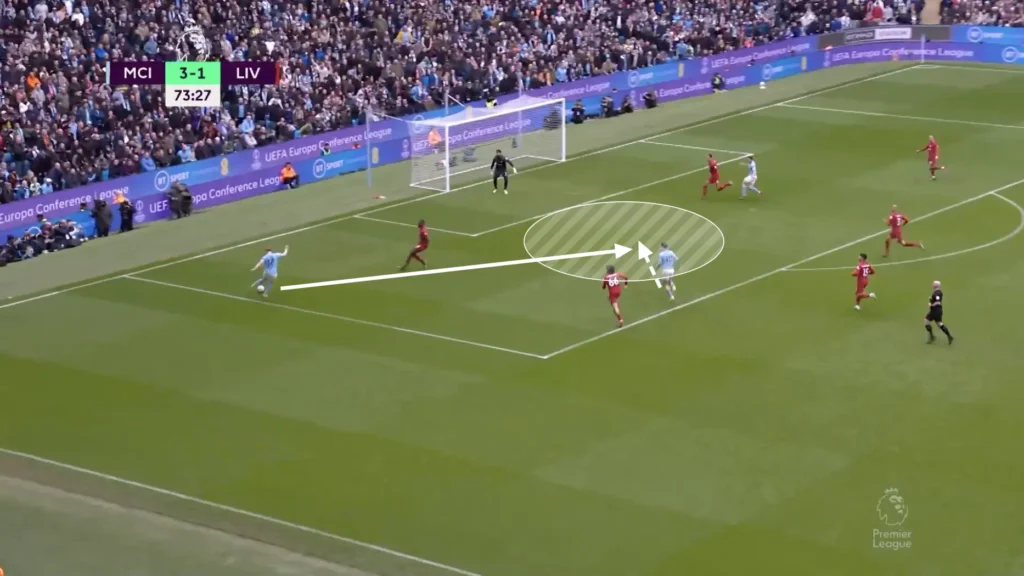
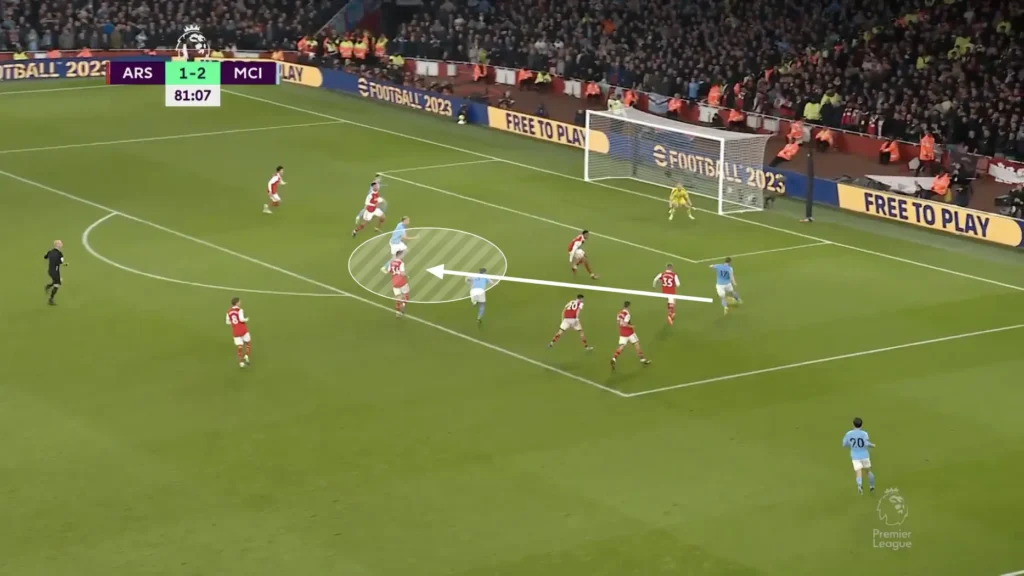
Back Post
De Bruyne, however, gets many of his assists from crosses at the back post. Haaland and the other City forwards often position themselves at the back post in crossing situations to stay on the blindside of their defender. The back post is where the space is, and the center-back’s lack of vision often makes it uncontested. In addition, the player defending that area is usually the fullback, who presumably will be a weaker aerial defender than the center-backs.
When he is behind the opponent’s backline, De Bruyne tries to find the back post with low, powerful crosses between the goalkeeper and the backline. His teammate runs to the space, ready to score in an open goal. This crossing technique forces the defenders to face their own goal when trying to clear the ball. This makes it extremely difficult for them because it massively increases the risk for own goals.
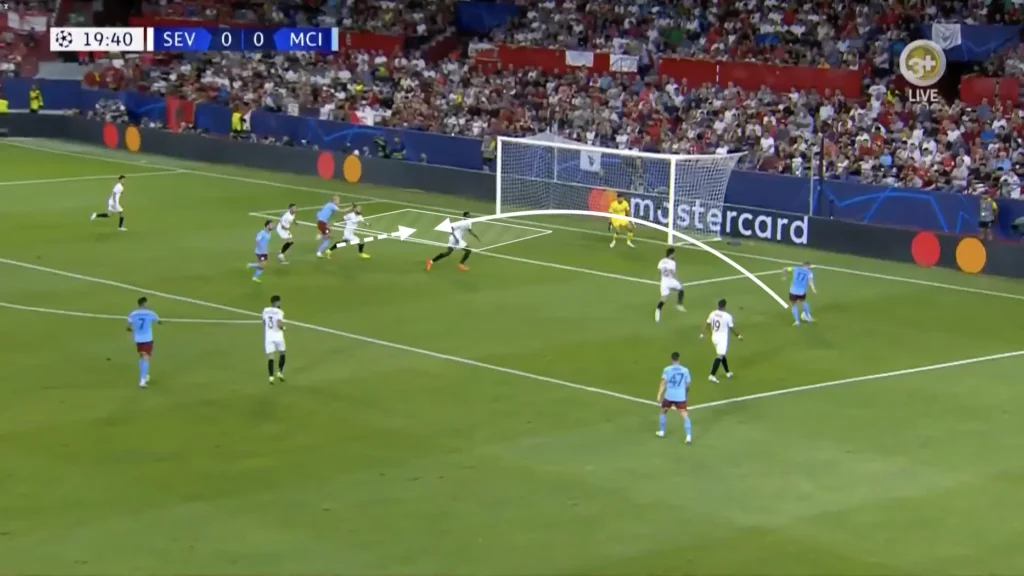
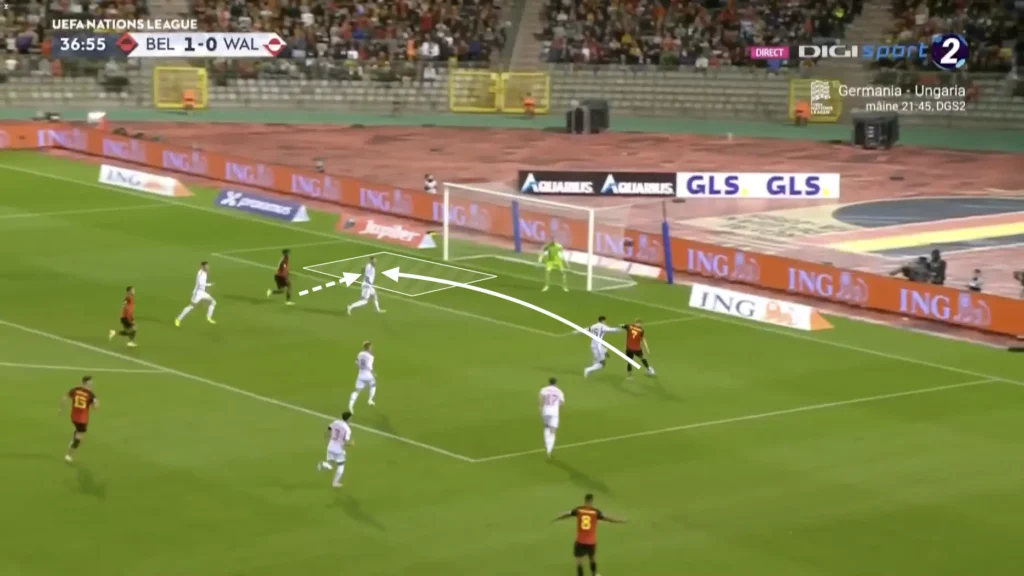
De Bruyne also tries to find the back post when positioned in front of the backline. He will perform a light chip aimed at the open space, allowing Haaland to take advantage of his often superior aerial quality.
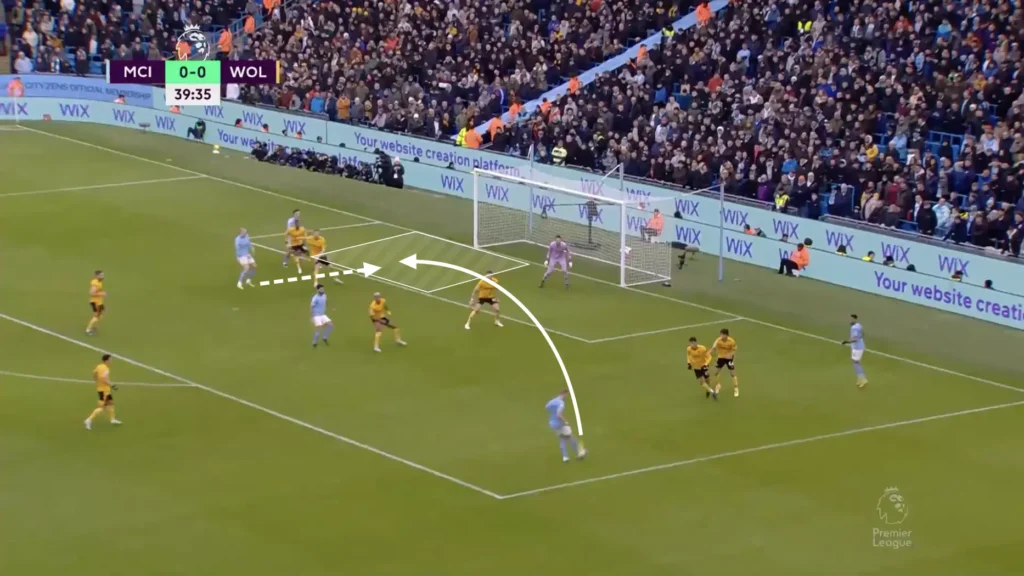
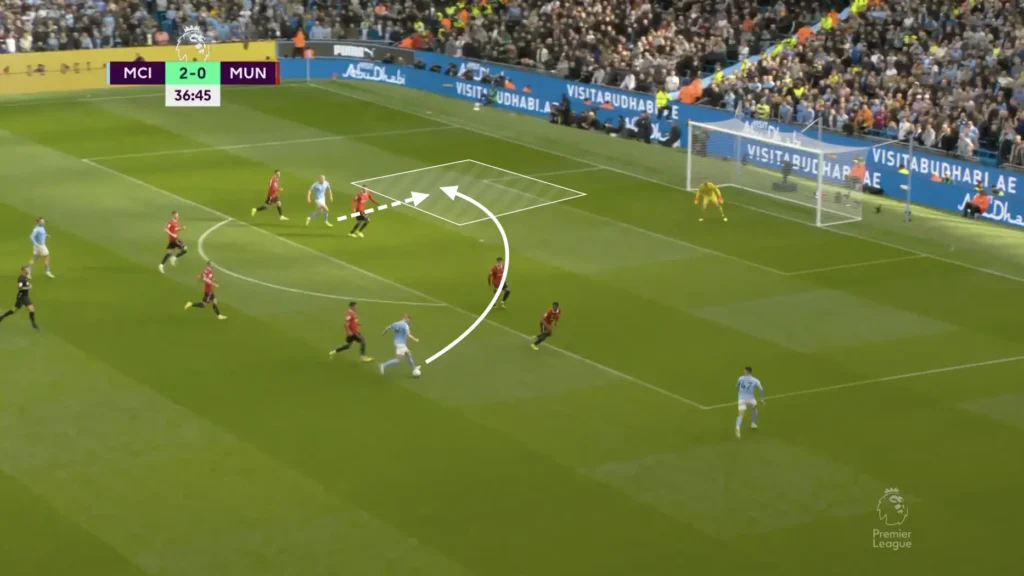
Through-balls
De Bruyne’s accurate passing allows him to find his teammates with through-balls. He will produce unbelievable passes, beating the defense and creating opportunities for his teammates. De Bruyne can find these passes against a high defense, playing the ball in behind for a running forward.
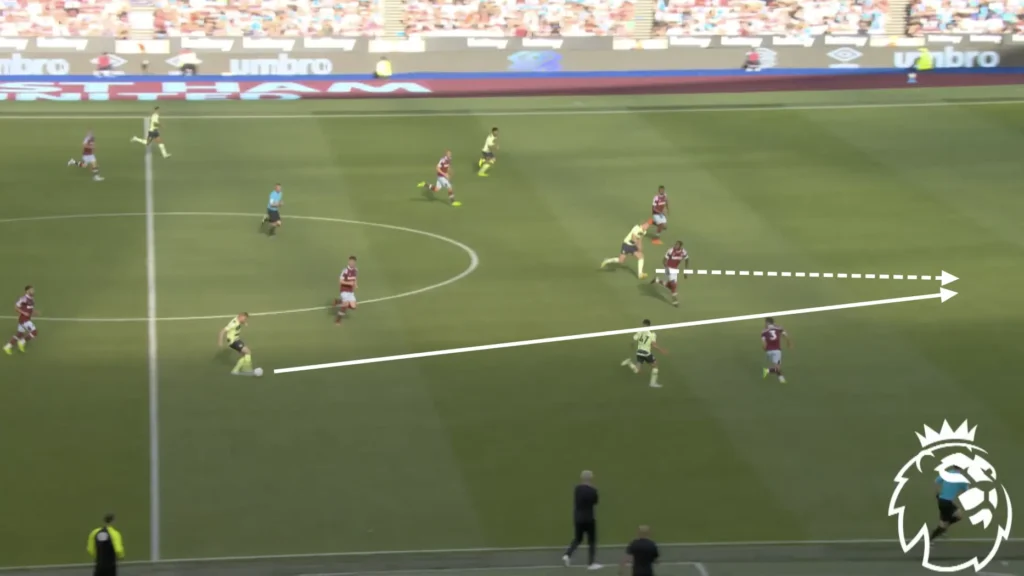
He can also find them against a low defense, playing the ball over the defenders for a running winger or midfielder:
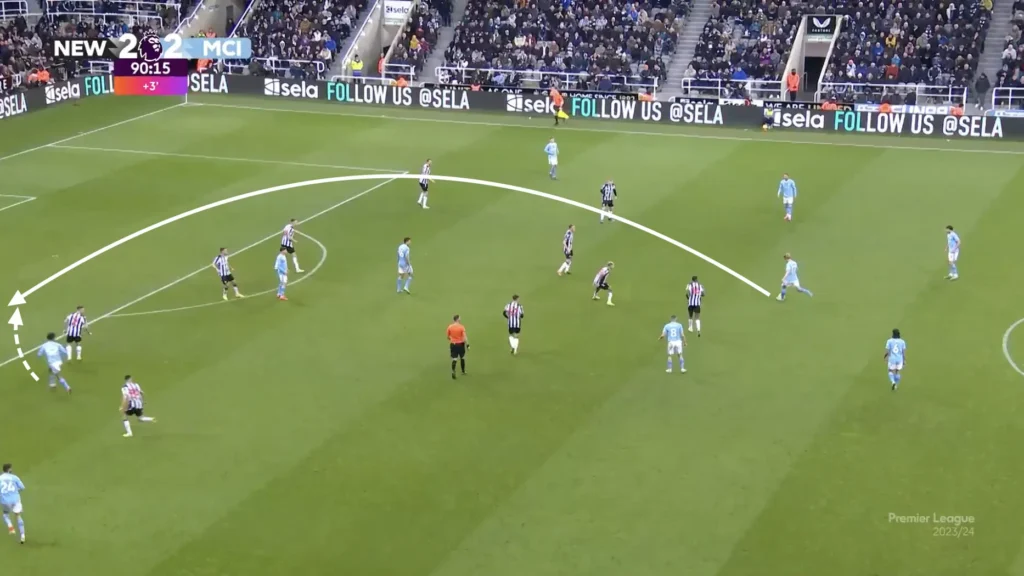
Set-Pieces
De Bruyne also gets many assists from set-pieces. He has incredible precision and will find his teammates from corners and free-kicks. Man City often overload the back post, causing De Bruyne to aim for that space.
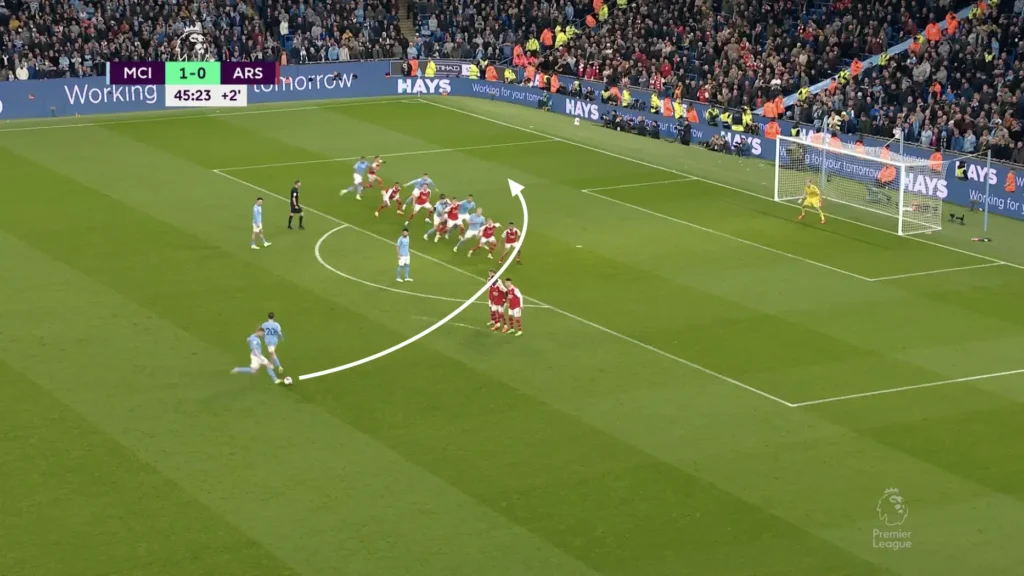
Kevin De Bruyne off-the-ball Movement
Beyond his mesmerizing dribbles and pinpoint passes, De Bruyne’s off-the-ball movements add an intriguing layer to his overall gameplay. His football intelligence allows him to find and exploit open spaces, creating goals and assists.
Operating in the Pockets
De Bruyne is usually positioned in the pockets between the midfield and defense. He places himself between players, which can cause the defenders confusion regarding who should mark him.
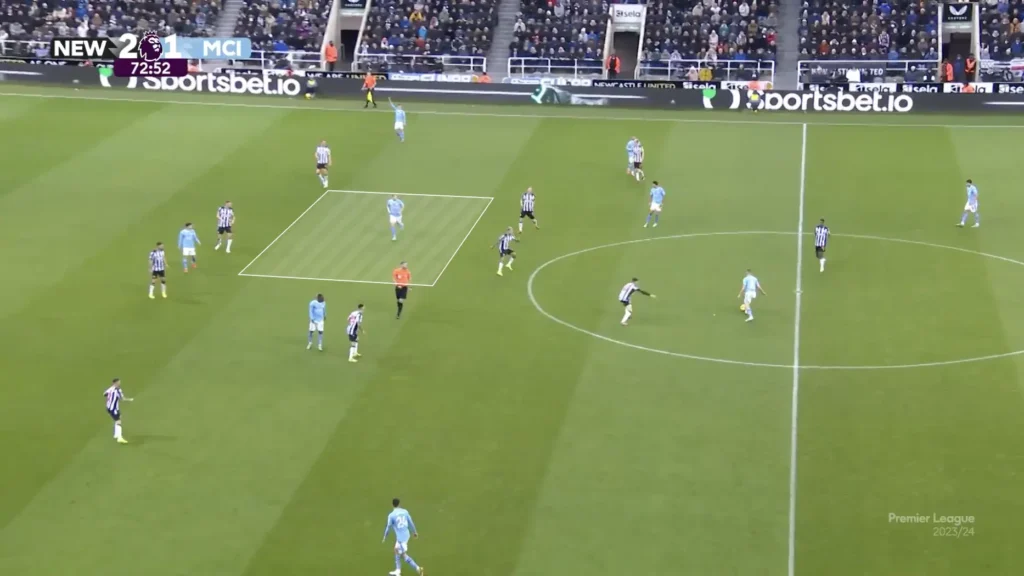
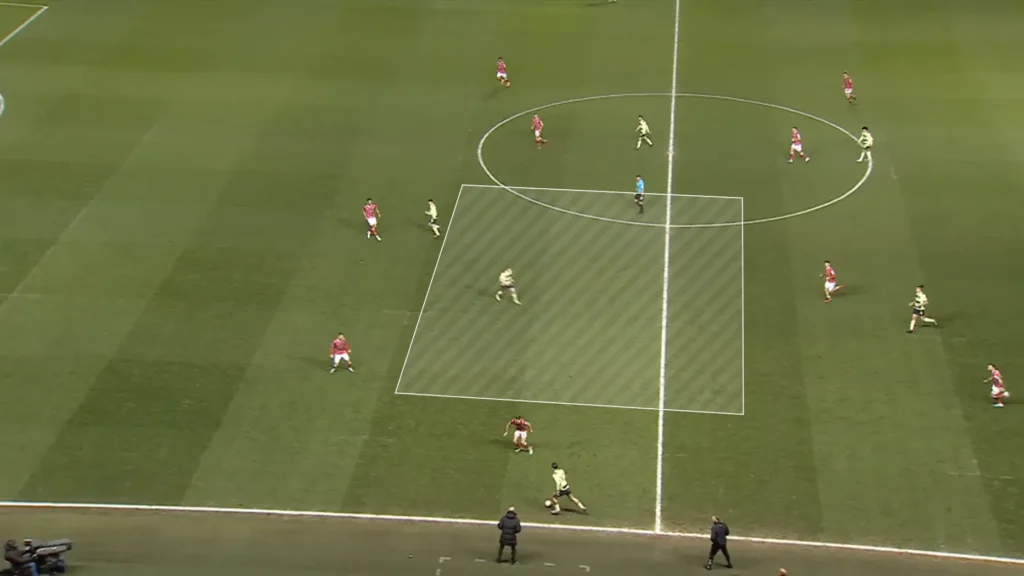
Getting the ball in these spaces allows him to turn and attack the defense. De Bruyne’s technical brilliance enables many alternative ways of beating the backline and scoring.
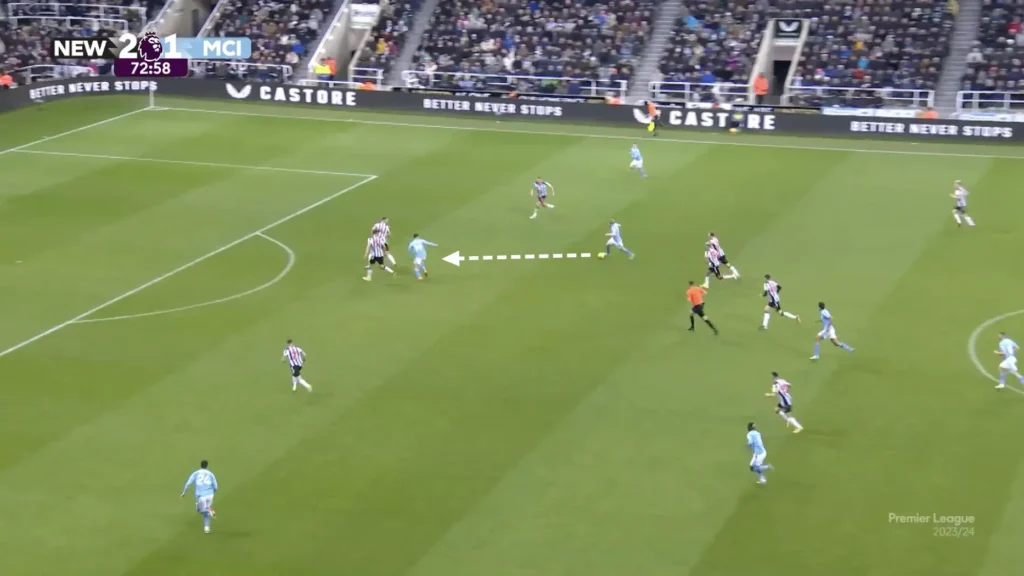
Attacking the Half-Spaces
A massive part of Man City‘s offensive tactics is attacking space between the opposition center-back and fullback. One way they do this is by using an underlap with De Bruyne. Man City will often, through their possession, find space for their wingers after switching play with a long ball. The winger will then attack his fullback, waiting for the run in behind from De Bruyne. If he gets the ball from the winger, the center-back needs to make a decision. If he goes to track the run, he leaves a massive space in the box for the striker to exploit. Therefore, Many center-backs will stay in the center, allowing the winger to play the ball into the open space to an open De Bruyne, who can find his teammates in the box with a cross.
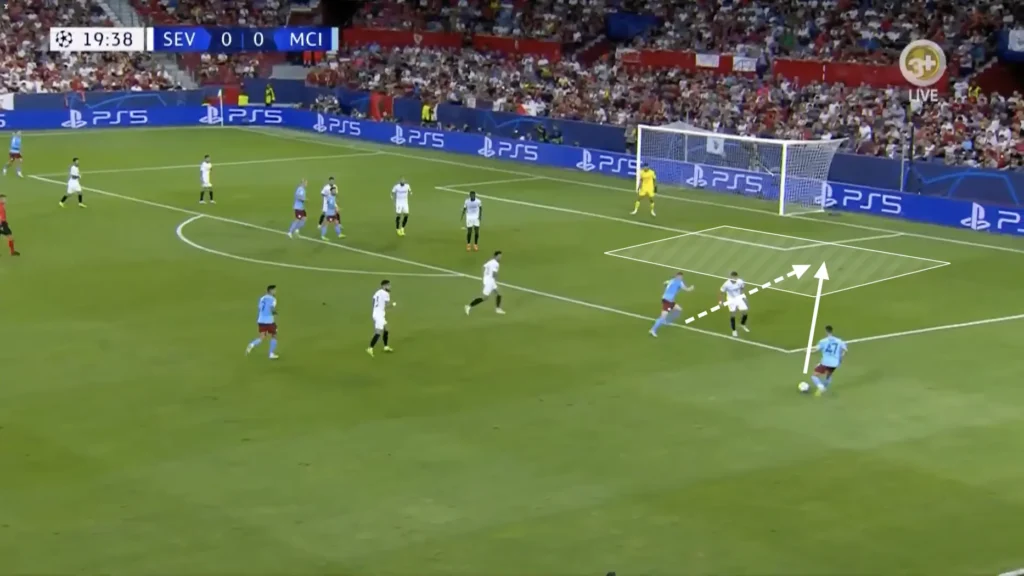
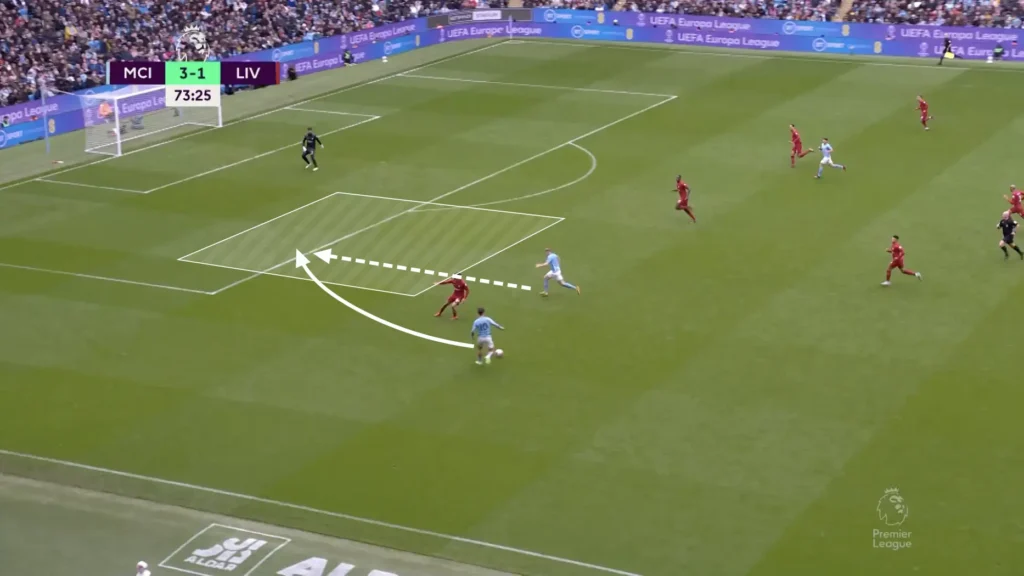
De Bruyne also exploits the space between the center-back and the fullback by running in and receiving through-balls from a central midfielder or the backline.
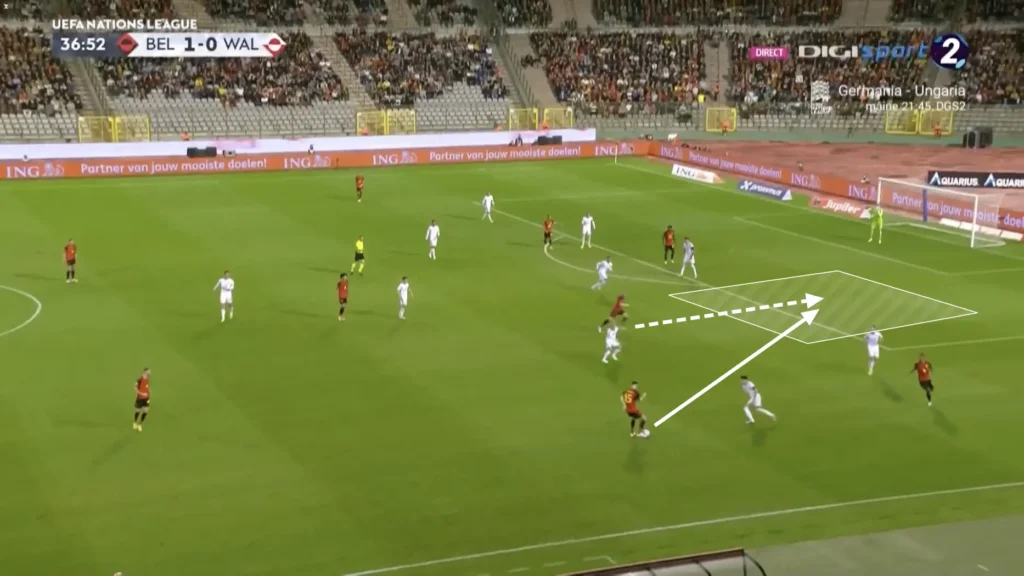
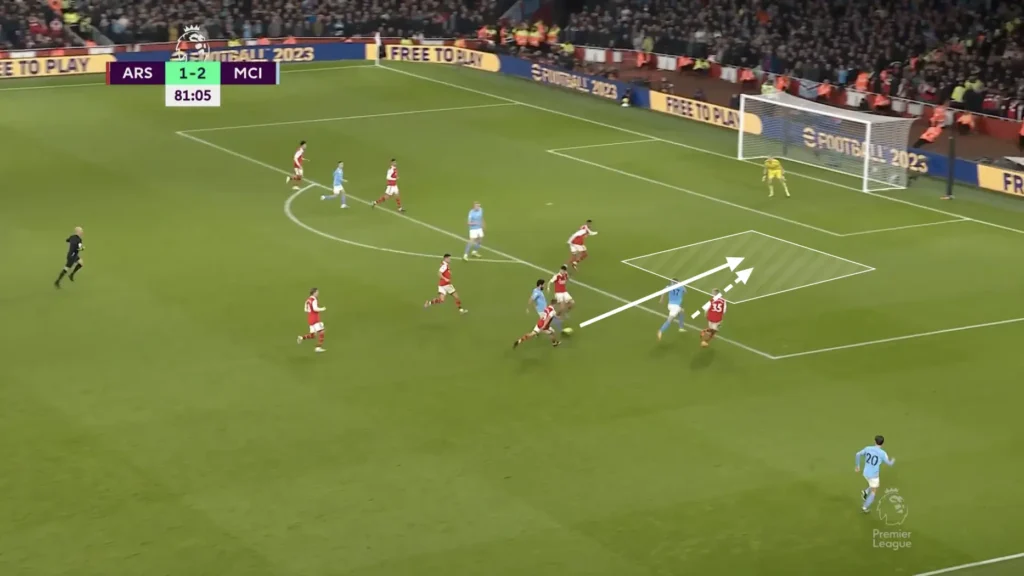
Overlaps
De Bruyne also uses the overlap to produce assist opportunities in the final third. When the City winger gets the ball, De Bruyne will quickly make the overlap, creating a 2v1 on the wing. If the opposition fullback drops to cover the overlapping run, the winger can cut inside and take a shot or combine with a midfielder. If the fullback covers the center, the ball could easily be played to De Bruyne, creating a crossing opportunity.
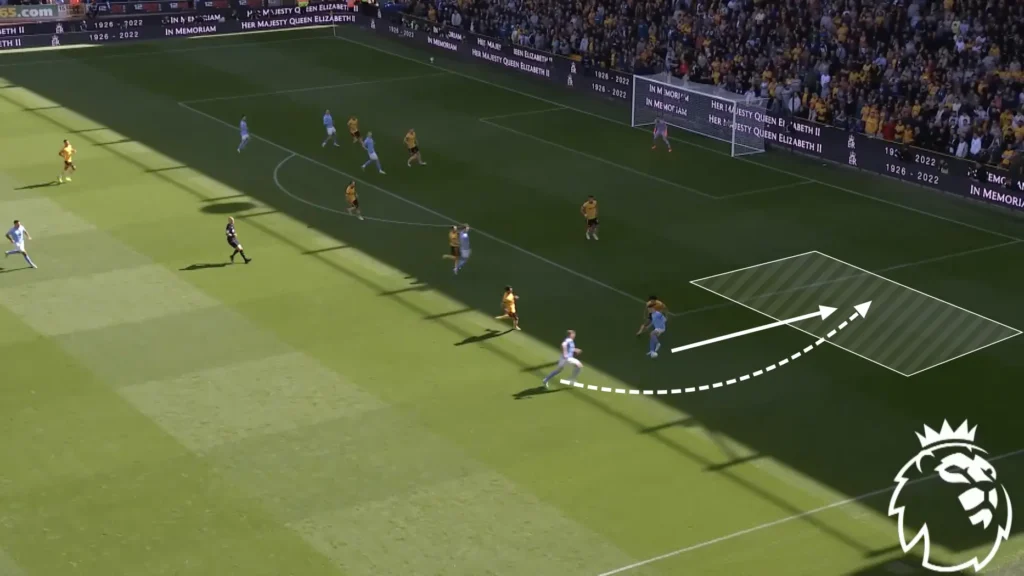
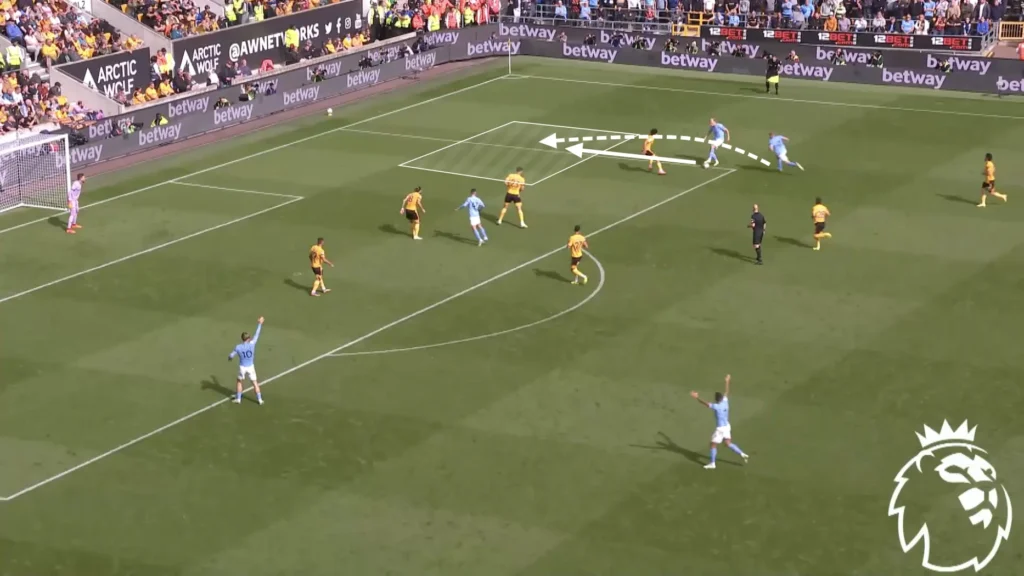
Kevin De Bruyne’s Goals
Kevin De Bruyne’s long shots are one of his greatest assets and his predominant source of goals. Man City often succeed in pushing down the opposition’s backline, creating space for De Bruyne in front of the backline.
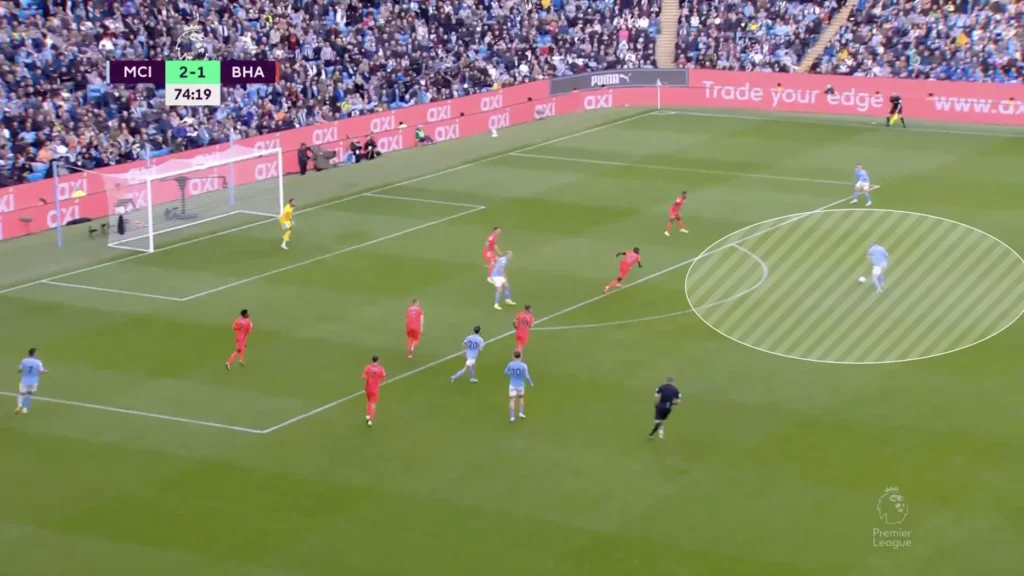

From here, De Bruyne will use his wand of a right foot to score long shots. The threat of these long shots makes it impossible for the backline to sit low and protect the space behind. If they are forced to push up, the space behind them will open, enabling Man City to exploit that space instead.
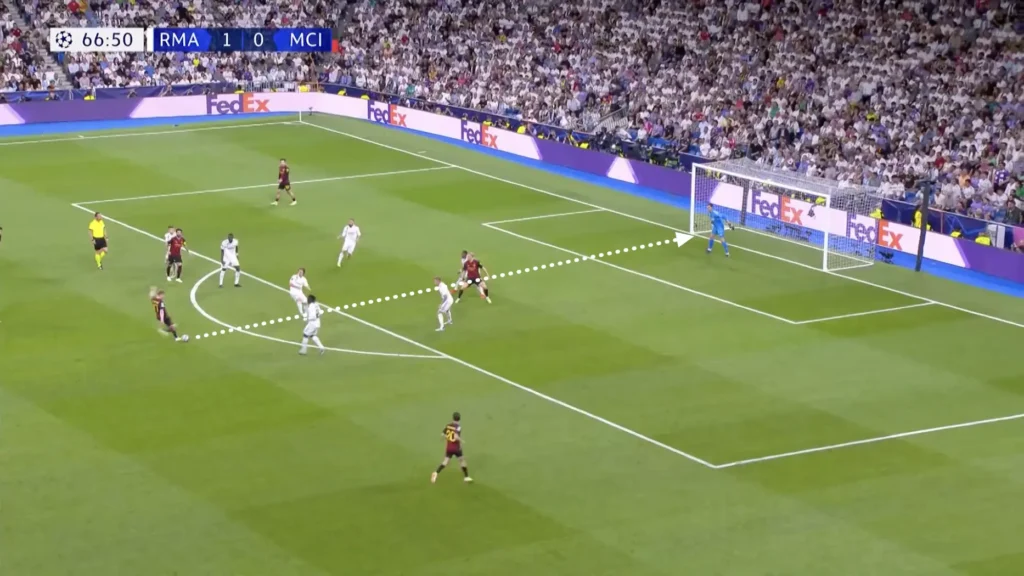
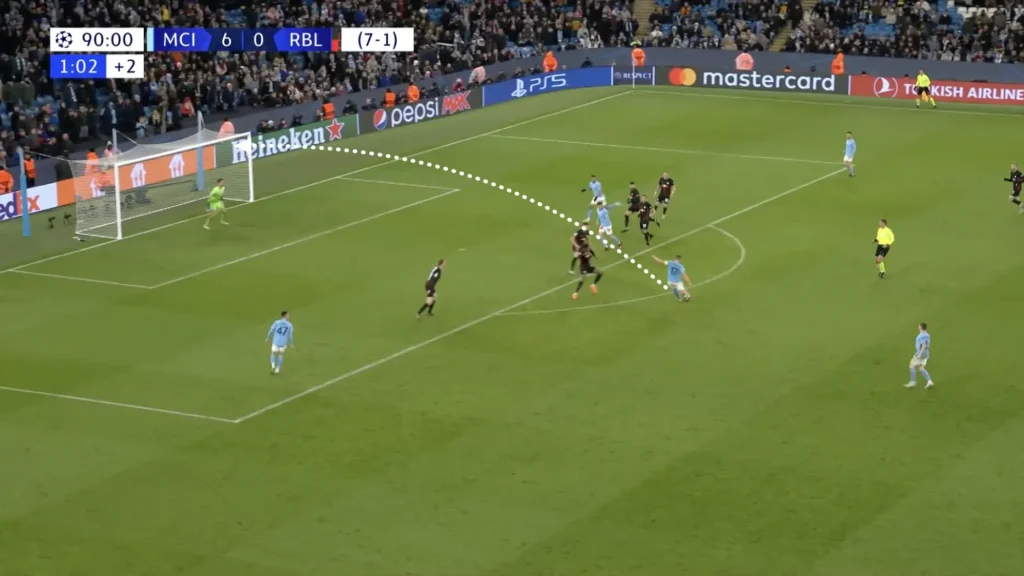
The Director of the Defense
De Bruyne can be regarded as the director of Man City’s defense, often deciding when they should push up and when to drop back. A frequent pattern in City’s games is that De Bruyne is the first one that goes up to press. After that, the rest of the team follows him, also looking to press. Having one player who dictates the defense from the front creates more synergy and clarity, allowing a more cohesive press. De Bruyne’s football intelligence is crucial for this role, showing how much his team values him.
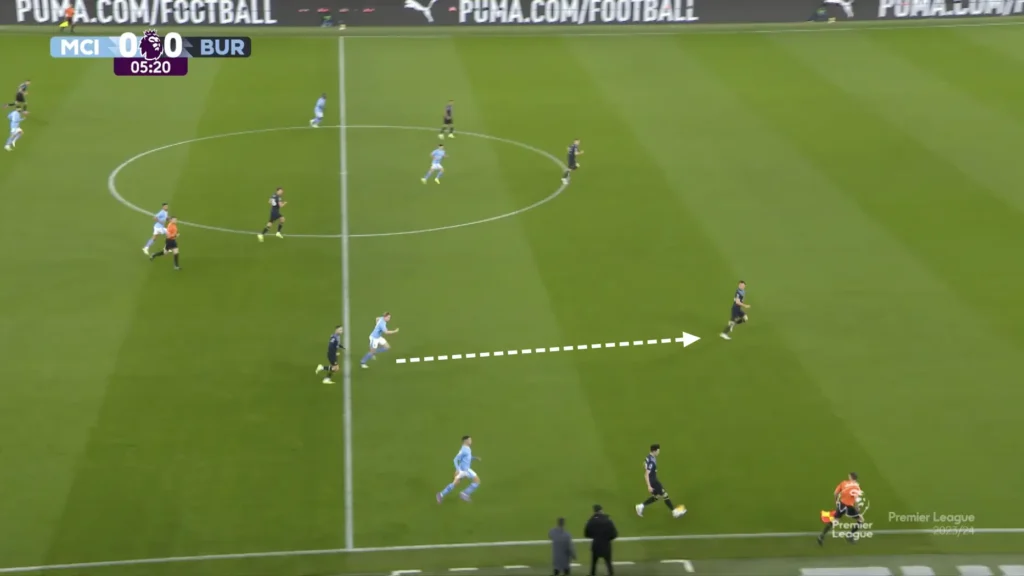
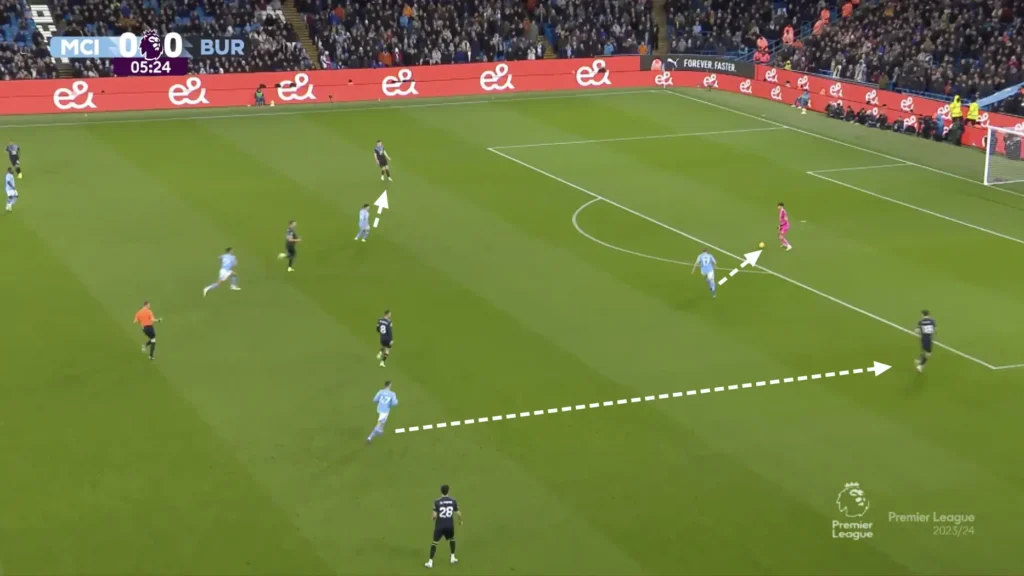
Final Thoughts
In conclusion, this individual analysis sheds light on the remarkable attributes and impact of Kevin De Bruyne on the football pitch. As one of the premier midfielders in the world, De Bruyne’s technical brilliance, vision, and versatility make him a standout player. From his precision in passing to his goal-scoring prowess, every part of his game contributes to his team’s success. De Bruyne’s ability to dictate the tempo, create opportunities, and lead by example showcases his significance to Manchester City and on the international stage with Belgium. His resilience, football intelligence, and consistent high-level performances demonstrate why he is regarded as one of the best in the business. As De Bruyne continues to excel at the highest level, his contributions undoubtedly leave an indelible mark on the beautiful game.
